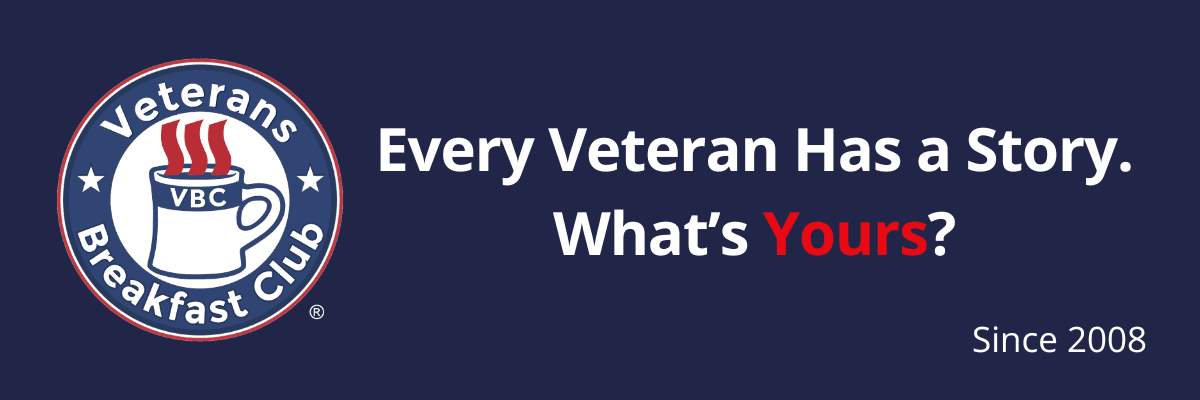Vietnam Veteran Chuck Theusch and the Library of Vietnam Project

Vietnam Veteran Chuck Theusch discusses his transformative journey from the battlegrounds of Vietnam to the peaceful mission of building libraries in Vietnam and Cambodia.
In 1969-70, Chuck served in the 4/3 Infantry, 11th Infantry Brigade, Americal Division in Vietnam. Like many others, he experienced the harsh realities of combat, witnessing the devastation of war and its profound impact on both the land and its people. These experiences left an indelible mark on him.
After his military service concluded, Theusch returned to civilian life in Wisconsin. However, the memories of Vietnam continued to weigh heavily on him. In 1999, after a return trip to Vietnam, he founded the Children’s Library International.
Theusch recognized the power of education in shaping the future of nations recovering from conflict. He understood that libraries could serve as beacons of hope, offering access to knowledge and fostering a love for learning among children and communities. With this vision in mind, he set out to build libraries in Vietnam and Cambodia, countries deeply scarred by war but resilient in their pursuit of progress.
The task was daunting, fraught with logistical challenges and bureaucratic hurdles. Yet, Theusch remained undeterred and gradually turned his vision into reality, one library at a time.
The impact of Theusch’s work extended far beyond the mere construction of physical structures. Each library became a symbol of reconciliation, bridging divides and fostering understanding between former adversaries. By providing access to books and educational resources, these libraries empowered children and communities to break the cycle of poverty and ignorance.
In Vietnam, Theusch’s efforts were met with gratitude and appreciation from local communities. The libraries he built became cherished landmarks, offering a safe haven for children to explore the world of literature and expand their horizons. In Cambodia, a nation still grappling with the legacy of genocide, his work brought hope to marginalized communities, offering a pathway to a brighter future.
Theusch’s journey is a testament to the transformative power of service and compassion.
Thank you to Tobacco Free Adagio Health and UPMC for Life for sponsoring this event!
How Winston Churchill Waged War

IWM:http://media.iwm.org.uk/iwm/mediaLib//38/media-38521/large.jpg
Glenn welcomes distinguished historian Allen Packwood, director of the Churchill Archives in Cambridge to discuss Winston Churchill’s wartime leadership. Our travel “Masters of the Air” tour to England in September 2024 will include a presentation by Allen Packwood at Churchill College in Cambridge.
Packwood’s book, “How Churchill Waged War,” delves into Winston Churchill’s leadership during World War II, challenging simplistic views of his wartime ministry. Packwood explores Churchill’s decision-making process, highlighting his humanity, emotion, and the complexity of his approach. The book focuses on pivotal moments, such as Churchill’s response to the fall of France and the Blitz, shedding light on his strategy and mindset.
Churchill’s leadership style was characterized by determination, forcefulness, and a willingness to take the offensive. He strategically positioned himself at the heart of the British war effort as Minister of Defence, closely interacting with senior commanders. Notably, Churchill faced challenges like the sinking of the French fleet, which he responded to decisively, even at the cost of strained relations with former allies.
During the Blitz, Churchill remained resolute in public, emphasizing retaliation and portraying bombing as part of Hitler’s invasion plan. Behind the scenes, he prioritized offensive strategies, particularly bombing Germany and bolstering forces in the Mediterranean. Churchill’s focus on offensive action aimed to wear down the enemy and maintain British imperial power.
However, Packwood also reveals Churchill’s vulnerabilities and the toll of leadership. Churchill faced opposition, suffered health issues, and grappled with limited resources. Despite his iconic status, he encountered criticism, internal strife, and the weight of wartime decisions.
Ultimately, Packwood portrays Churchill as a leader driven by the simple goal of victory at all costs, tackling challenges one at a time and navigating the complexities of war with resolve and determination.
Allen Packwood is a distinguished archivist and historian, currently serving as the Director of the Churchill Archives Centre at Churchill College, Cambridge. He has been associated with the Centre since 1995, initially as a qualified archivist, and later taking on roles of increasing responsibility, including Acting Keeper and ultimately Director in 2002.
Throughout his career, Packwood has been actively involved in curating exhibitions and organizing events related to Churchill and Cold War history. He is recognized for his expertise on Churchill and has lectured extensively in both the United Kingdom and the United States.
Under Packwood’s leadership, the Churchill Archives Centre continues to be a vital repository of historical documents, housing the papers of Sir Winston Churchill, Baroness Thatcher, and many other influential figures from the Churchill era and beyond.
Thank you to Tobacco Free Adagio Health and UPMC for Life for sponsoring this event!
Information Session for the VBC Masters of the Air Tour of WWII Airfield in England, Sept 11-19, 2024
Bring your questions and curiosity to this conversation about our VBC Masters of the Air Tour of World War II East Anglia Air Fields . Even if you don’t plan to travel with us in September, you’ll still learn a lot about the sights we’ll see and the history we’ll trace. Trip Historians Todd DePastino and Glenn Flickinger will talk about the trip, answer questions, and highlight some of the sights we’ll take in and people we’ll meet.
US Intelligence Spies at Stalag Luft III on “Masters of the Air” with Glenn Flickinger @ 7pm ET
After arriving at Stalag Luft III, he continued the war effort by utilizing his previous training as an OSS [Office of Strategic Services] agent to become a covert code writer for MIS-X in Ft. Hunt. Carol’s father was head of the intelligence operation communicating with MIS-X from SL3. MIS-X sent and received coded letters with POWs. He taught other POWs how to code. I believe he was made head of a committee at SL3 to oversee coordination of athletic activities. This allowed him to visit all the compounds and while there, he actually was teaching POWs how to code. He also participated in plays in the compound’s camp theatres, keeping him associated with many POWs while conducting intelligence. Her father thought he was corresponding with a woman in the U.S. He finally met “the woman” when he returned home.
British intelligence service MI9 did these same things from London. A German guard in the camp bragged he was going home to Peenemunde where there was a big VII rocket factory, and he said that rocket would win the war for the Germans. The RAF coders immediately reported that news to MI9 in London, and they passed the info on to the RAF who then immediately set up a bombing raid on Peenemunde destroying that facility. The guard returned to the camp and was dismayed to tell the POWs that the facility had been bombed, and he couldn’t understand how the RAF knew it was there.
The United States Department of War operated MIS-X. Secret equipment, such as small compasses, maps, and radios were smuggled into the camp to aid with escapes and intelligence operations.
Between MI9 and MIS-X, an abundance of contraband made its way into the camp. Each packer of special illegal parcels had a unique mark that the prisoners at Sagan were alerted to look for. As the tunnels advanced in the spring and summer of 1943, the steady delivery of illegal parcels flooded the camp, and shipments were quite sizable.
Monopoly games with real German money, brushes that came apart to reveal contraband, including inks for forging documents, sports equipment that hid the same, and compasses hidden in uniform buttons were gratefully received. There were blankets that when washed revealed pattern marks to cut along to turn into civilian jackets.
At one point, MI9 delivered a full German uniform. Ten days after the Japanese surrendered, ending the war, MIS-X was shut down. It was not until 1986 that any information about the covert operation was revealed. Exactly what they communicated and their methods for doing so are still somewhat classified today.
Thank you to Tobacco Free Adagio Health and UPMC for Life for sponsoring this event!
Open Conversation @ 7pm ET

Why don’t veterans talk with their children about war? What is the “smoking lamp,” and do ships still have them? What is special about the Coast Guard? How has aircraft navigation changed?
These are the types of questions we’d like to pose to our veterans tonight, during VBC Open Conversation. The idea is to encourage veterans to share whatever stories or insights they have about their service and the branches in which they served. What did you like or not like? Is it better to be officer or enlisted? What would you tell a young person joining today?
We want to explore, understand, and learn about military culture, especially those areas that civilians have a hard time grasping. What are common misconceptions about the military? What do the movies get wrong? What made your type of service special or unique?
Join us for Open Conversation, and please let us know if you have something you’d like to ask, a topic you’d like to discuss, or a story you’d like to share. Email Todd at todd@veteransbreakfastclub.org and let him know!
Thank you to Tobacco Free Adagio Health and UPMC for Life for sponsoring this event!








